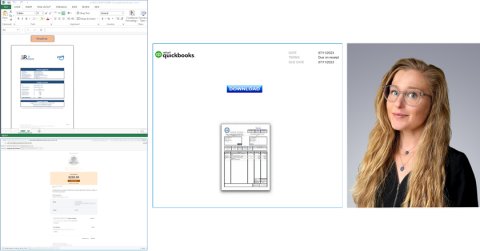
Proofpoint researchers identified a new malware call WikiLoader. It was first identified in December 2022 being delivered by TA544, an actor that typically uses Ursnif malware to target organisations.
WikiLoader is a sophisticated downloader with the objective of installing a second malware payload. The malware contains interesting evasion techniques and custom implementation of code designed to make detection and analysis challenging. WikiLoader was likely developed as a malware that can be rented out to select cybercriminal threat actors.
Based on the observed use by multiple threat actors, Proofpoint anticipates this malware will likely be used by other threat actors, especially those operating as initial access brokers (IABs).
Proofpoint researchers discovered at least eight campaigns distributing WikiLoader since December 2022. Campaigns began with emails containing either Microsoft Excel attachments, Microsoft OneNote attachments, or PDF attachments. Proofpoint has observed WikiLoader distributed by at least two threat actors, TA544 and TA551. While most cybercriminal threat actors have pivoted away from macro enabled documents as vehicles for malware delivery, TA544 has continued to use them in attack chains, including to deliver WikiLoader.
The first campaign in Proofpoint data distributing WikiLoader was observed on 27 December 2022 followed by an updated version of the threat used in a campaign on 8 February 2023. Proofpoint researchers observed a high-volume malicious email campaign targeting companies which began with emails containing a Microsoft Excel attachment spoofing the Italian Revenue Agency. The Microsoft Excel attachments contained characteristic VBA macros which, if enabled by the recipient, would download and execute a new unidentified downloader that Proofpoint researchers eventually dubbed WikiLoader. This campaign was attributed to TA544.
On 31 March 2023, Proofpoint observed WikiLoader delivered by TA551 using OneNote attachments containing embedded executables. The OneNote attachments contained a hidden CMD file behind an “OPEN” button which, if clicked by the recipient, downloaded and executed WikiLoader.
On 11 July 2023, researchers identified additional changes to the actively developed malware. In this campaign, TA544 used accounting themes to deliver PDF attachments with URLs that led to the download of a zipped JavaScript file. If the JavaScript was executed by the recipient, it led to the download and execution of the packed downloader, WikiLoader. Notably, this campaign was high-volume, including over 150,000 messages.
So far, Proofpoint has only observed WikiLoader deliver Ursnif as a second-stage payload. However, given its use by multiple threat actors, it is possible more ecrime actors, especially those operating as IABs, will use WikiLoader in the future as a mechanism to deliver additional malware payloads.
Based on analysis of multiple versions, Proofpoint assesses with high confidence this malware is in rapid development, and the threat actors are attempting to make the loader more complicated, and the payload more difficult to retrieve.
WikiLoader is delivered via activities regularly observed by threat actors, including macro-enabled documents, PDFs containing URLs leading to a JavaScript payload, and OneNote attachments with embedded executables. Thus, user interaction is required to begin the malware installation. Organisations should ensure macros are disabled by default for all employees, block the execution of embedded external files within OneNote documents, and ensure JavaScript files are opened by default in a notepad or similar application, by adjusting default file extension associations via group policy object (GPO).





